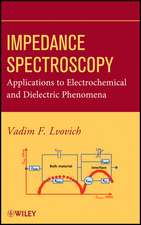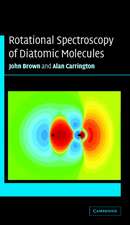Contemporary Quantum Chemistry: An Introduction
Autor J. Goodismanen Limba Engleză Paperback – 19 mar 2012
Preț: 392.60 lei
Nou
Puncte Express: 589
Preț estimativ în valută:
75.14€ • 81.11$ • 63.01£
75.14€ • 81.11$ • 63.01£
Carte tipărită la comandă
Livrare economică 18 aprilie-02 mai
Preluare comenzi: 021 569.72.76
Specificații
ISBN-13: 9781468422702
ISBN-10: 1468422707
Pagini: 392
Ilustrații: XII, 376 p.
Dimensiuni: 152 x 229 x 21 mm
Greutate: 0.52 kg
Ediția:Softcover reprint of the original 1st ed. 1977
Editura: Springer Us
Colecția Springer
Locul publicării:New York, NY, United States
ISBN-10: 1468422707
Pagini: 392
Ilustrații: XII, 376 p.
Dimensiuni: 152 x 229 x 21 mm
Greutate: 0.52 kg
Ediția:Softcover reprint of the original 1st ed. 1977
Editura: Springer Us
Colecția Springer
Locul publicării:New York, NY, United States
Public țintă
ResearchCuprins
1. Electrons in Atoms and Molecules.- 1.1. Introduction.- 1.2. What Do Electrons Look Like?.- 1.3. Waves.- Problems.- 2. The Wave Equation.- 2.1. Derivation of the Wave Equation.- 2.2. Solutions to the Wave Equation.- 2.3. Numerical Solution.- Appendix. Traveling Waves.- Problems.- 3. The One-Dimensional Schrödinger Equation.- 3.1. The Wave Function.- 3.2. The Particle in the Box.- 3.3. What One Can Do with Wave Functions.- 3.4. A Dose of Mathematics.- Problems.- 4. The Variational Method and the Harmonic Oscillator.- 4.1. The Variational Method.- 4.2. The Harmonic Oscillator.- 4.3. Harmonic Oscillator Energies and the Diatomic Molecule.- 4.4. Harmonic Oscillator Wave Functions.- Appendix A. Orthogonality.- Appendix B. Excited States and Variation.- Problems.- 5. Three-Dimensional Problems.- 5.1. Separation of Variables.- 5.2. Spherical Symmetry.- 5.3. Angular Equations for Spherical Symmetry.- 5.4. The Rotating Diatomic Molecule.- Appendix. The Three-Dimensional Harmonic Oscillator.- Problems.- 6. Hydrogenlike Atoms.- 6.1. The Radial Equation.- 6.2. The Energies.- 6.3. Spectra of Hydrogenlike Atoms.- 6.4. The Ground State Wave Function.- 6.5. Excited State Wave Functions.- Appendix. Numerical Solution.- Problems.- 7. Identical Particles.- 7.1. Wave Functions for Several Electrons.- 7.2. The Pauli Principle and Spin.- 7.3. Helium Atom Wave Functions.- Appendix. Electron Repulsion Integral.- Problems.- 8. Atomic Structure.- 8.1. Variational Calculation for Helium.- 8.2. Lithium and the Exclusion Principle.- 8.3. The Independent-Electron Model.- 8.4. Screening.- 8.5. Atomic Properties.- 8.6. Angular Momentum.- Appendix. Determinant Wave Functions.- Problems.- 9. The Hydrogen Molecule.- 9.1. The Diatomic-Molecule Problem.- 9.2. H2+ Wave Functions.- 9.3. The HydrogenMolecule.- 9.4. The Valence Bond Wave Function.- 9.5. Linear Variation.- Appendix. Integral Evaluations.- Problems.- 10. Valence Bond Theory.- 10.1. Spin Exchange and Resonance.- 10.2. Bond Formation.- 10.3. Bond Strengths.- Appendix. The Secular Equation.- Problems.- 11. Molecular Orbital Theory.- 11.1. Return to H2+ and H2.- 11.2. Use of Atomic Orbitals.- 11.3. Diatomic Molecules.- 11.4. Polyatomic Molecules.- 11.5. Semiempirical Procedures.- Problems.- 12. Symmetry.- 12.1. Symmetry Operations.- 12.2. Representations.- 12.3. Generating Representations.- 12.4. Reducing a Representation.- 12.5. Symmetry-Adapted Functions.- 12.6. Applications to MO Theory.- Appendix. Two Theorems.- Problems.- 13. Time Dependence.- 13.1. Time-Dependent Schrödinger Equation.- 13.2. Transitions.- 13.3. Transitions Due to Light.- 13.4. Selection Rules.- 13.5. Molecular Spectra.- Appendix. Solutions to Two Problems.- Problems.











